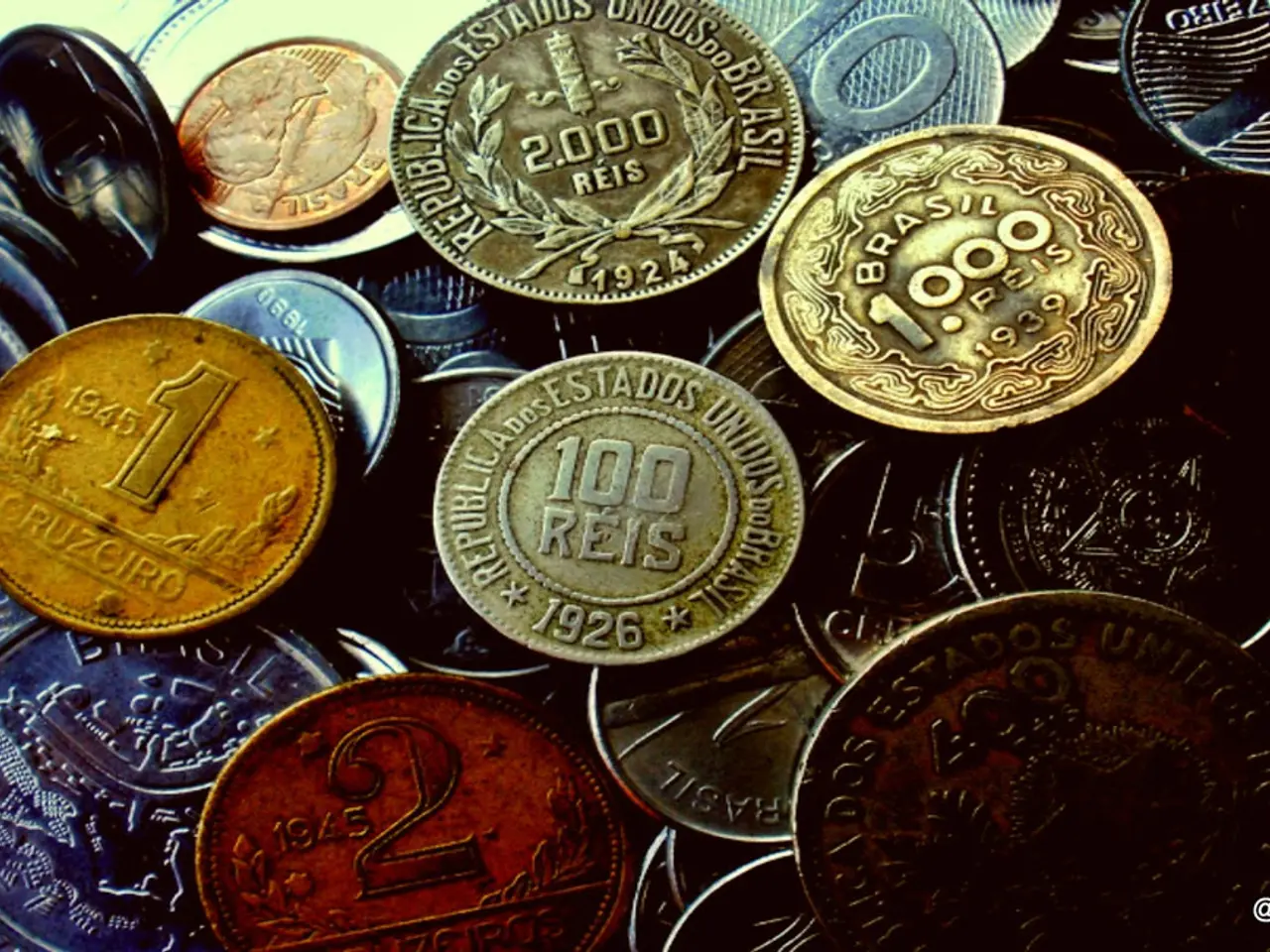Essential Knowledge for New Crypto Enthusiasts: Mastering Cryptocurrency Basics with Coins and Tokens
In the world of cryptocurrency, two main types of digital assets stand out: coins and tokens. While they might seem similar at first glance, they serve distinct roles and functions within the blockchain ecosystem.
Coins, such as Bitcoin and Ethereum, are native digital currencies that live on their own special blockchains. They are primarily used as digital money or payment mediums, serving as the backbone of their respective blockchain networks. For example, Bitcoin is often thought of as digital gold due to its limited supply and use as a store of value, while Ethereum's native coin, ETH, is used to pay for gas fees and fuel the Ethereum network, including minting Non-Fungible Tokens (NFTs).
On the other hand, tokens are versatile digital assets built on top of existing blockchains, most famously Ethereum's. They can represent a wide range of digital assets or utilities, such as access to applications, governance rights, or even digital land. Some popular examples include USDT (Tether), Binance Coin (originally a token), and the Basic Attention Token.
The key difference between coins and tokens lies in their blockchain architecture. Coins operate on their own independent blockchains, while tokens are created and managed on existing blockchains through smart contracts. This means coins have full technical independence, with their own infrastructure, whereas tokens rely on the blockchain they run on and the security of that platform's smart contracts.
It's essential to understand whether an asset is a coin or a token as it can significantly impact your approach when investing, trading, or exploring. For instance, coins are typically long-term plays, while tokens often power specific platforms or ecosystems. Transparent teams, clear whitepapers, real use cases, and community involvement are signs of legitimate crypto projects.
Moreover, the transaction fees for coins are paid to their own network, while for tokens, they depend on the underlying blockchain platform. Sending coins means moving value across their own blockchain, while sending tokens is done through smart contracts on their host blockchain.
A notable example of a token is Chainlink (LINK), which powers a decentralized oracle network, helping smart contracts communicate with the real world. Another example is USDC, a token that lives on blockchains like Ethereum and Solana, making fast, cheap transactions without wild price swings.
In conclusion, while both coins and tokens play crucial roles in the cryptocurrency world, they serve distinct purposes. Coins are foundational to their respective blockchain ecosystems and serve as "native currency," while tokens represent a wide range of digital assets or utilities built on top of these blockchains. To spot the difference between coins and tokens, check if the asset runs on its own blockchain (coin) or if it says something like "ERC-20" or "BEP-20" (token). Understanding this distinction can help make smarter decisions about investing, storage, and usage in the cryptocurrency market.
[1] Blockgeeks. (n.d.). What is a Token? Crypto Tokens Explained. Retrieved March 28, 2023, from https://blockgeeks.com/guides/what-is-a-token/
[2] Investopedia. (2021, October 29). What Is a Cryptocurrency Token? Retrieved March 28, 2023, from https://www.investopedia.com/terms/c/cryptocurrencytoken.asp
[3] CoinMarketCap. (n.d.). What is a Token? Retrieved March 28, 2023, from https://coinmarketcap.com/alexandria/article/what-is-a-token
[4] CoinDesk. (2020, December 02). What's the Difference Between a Coin and a Token? Retrieved March 28, 2023, from https://www.coindesk.com/learn/what-is-the-difference-between-a-coin-and-a-token/
- In the realm of blockchain technology, tokens can represent a variety of digital assets or utilities, such as access to applications, governance rights, or even digital land, making them versatile additions to the cryptocurrency market. (education-and-self-development, tokens, blockchain)
- Understanding the distinction between coins and tokens can be crucial for informed decisions about investing, storage, and usage within the cryptocurrency market. For instance, coins are often long-term plays, while tokens often power specific platforms or ecosystems. (investing, trading, coins, tokens)
- Transparent teams, clear whitepapers, real use cases, and community involvement are essential qualities of legitimate crypto projects, whether they involve coins or tokens. (transparent teams, whitepapers, use cases, community involvement, cryptocurrency)
- Sending tokens is performed through smart contracts on their host blockchain, unlike coins, which involve moving value across their own independent blockchains. This difference in transaction processing matters for security and economic considerations. (sending tokens, smart contracts, blockchain, coins)




